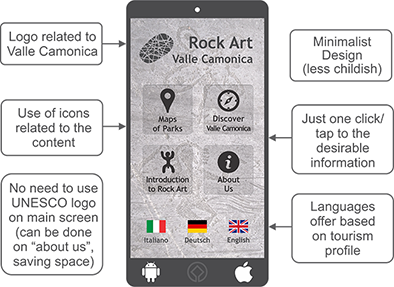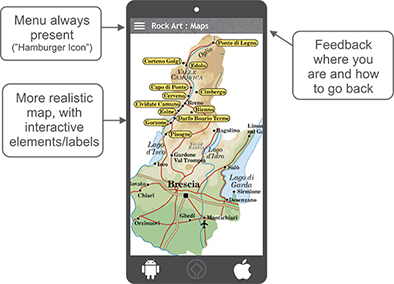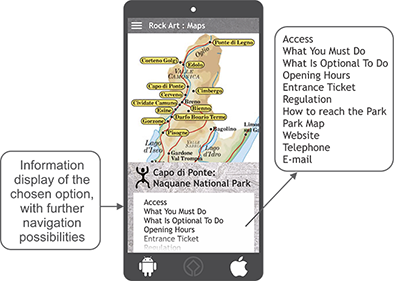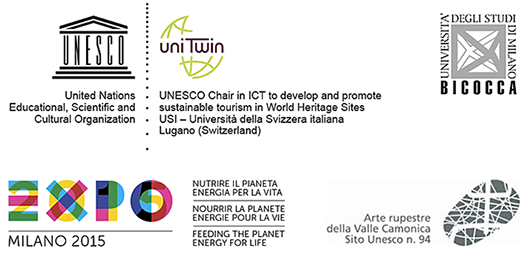Summer School:
ICTs to Promote Sustainable Tourism
Tangible and Intangible Heritage between Cultural, Leisure, and Gastronomic Tourism |

|



| |
|
|
Description
|
The Summer School links three elements qualifying EXPO 2015 - our land and the development
of the related resources: in primis our food, sustainable approach as a global value,
and ICT, as a condition of global development, for its ability to go through space and time,
and to improve reputation and image while increasing awareness of a place.
The Summer School is committed to discovering the natural and cultural places we live in,
and intends to offer an overview of some excellences in Lombardy region and in
Ticino region (Switzerland), with a particular focus on sustainable tourism.
|
|
Topics Covered
|
Sustainability (Sustainability and its development along time; Sustainability and sustainable
tourism; Sustainability, tourism and ICT; Sustainable tourism in UNESCO WHS);
online communication (The online communication model; Online reputation construct;
The role of ICT in tourism); Tangible and intangible Heritage in Tourism
(Cultural tourism in World Heritage Sites; Food and Gastronomy: tourism, land and value).
Case Studies.
|
|
UNESCO Chair
|
The UNESCO Chair in ICT to develop and
promote sustainable tourism in World Heritage
Sites is committed to perform extensive research and
teaching on how ICT can be effectively exploited to
develop and promote sustainable tourism at the World
Heritage Sites (WHSs), with a special emphasis on the
southern hemisphere. Its scope touches and overlaps on
the following fields:
eTourism, eLearning, and ICT4D (ICT for
Development)
The chair attempts to facilitate the flow of best practices
and state-of-art information among WHSs when it comes
to online communication and presence.
For its commitment, UNESCO chair sustains this Summer School as scientific partner.
|
|
Lectures taken
|
Sustainability and sustainable tourism: an overview
by Prof. Dr. Maria Garbelli
eTourism: an introduction
by Prof. Dr. Lorenzo Cantoni
eTourism: online communication and promotion
by Prof. Dr. Lorenzo Cantoni
UNESCO World Heritage and Tourism. The case of Ethiopia and Kenya
by Dr. Ray Mutinda
Sustainable tourism and (in)Tangible Heritage
by Prof. Dr. Maria Garbelli
Intercultural online communication
by Prof. Dr. Lorenzo Cantoni
Webanalytics
by Prof. Dr. Lorenzo Cantoni
Tourism and religion. Some cases
by Dr. Silvia de Ascanis
Consumers willingness to pay for PDO products: the case of dry-cured ham
by Prof. P. Mariani:, Dr. C. Garavaglia
On line sustainability of a WHS in Northern Italy. The case of Rock art of the Camonica valley
by Prof. Dr. Maria Garbelli
Conservation and development of an Industrial Heritage Site at UNESCO. The case of Sesto San Giovanni
by Dr. I. Suffia
eLearning in Tourism
by Dr. Nadzeya Kalbaska
Online Communication of Food and Gastronomy
by Dr. Elena Marchiori
Online reputation
by Dr. Elena Marchiori
The development of a touristic area in Lombardia - tools and outputs
by Dr. Comneno d´Otranto
eTourism, informal learning and gamification
by Asta Adukaite
|

| |
|
|
Rock Drawings in Valle Camonica
|
Valle Camonica, situated in the Lombardy plain, has one of the world's greatest collections of
prehistoric petroglyphs - more than 140,000 symbols and figures carved in the rock over a period
of 8,000 years and depicting themes connected with agriculture, navigation, war and magic.
(http://whc.unesco.org/en/list/94)
It was the first UNESCO's World Heritage Site for Italy, in 1979.
|
|
Mobile App for Valle Camonica
|
The proposed project was to (re)design a mobile app for the Rock Drawing in Valle Camonica, taking in
consideration the touristic profile of Brescia/Lombardy region (foreign adults), and the visitors profile of
the Rock Drawings (young Italian public).
The complete Mobile App Case study presentation is available
for download (20 pages PPT-PDF format)
|
|
Screenshots
|



|



|
 Contact
Contact











 Contact
Contact










